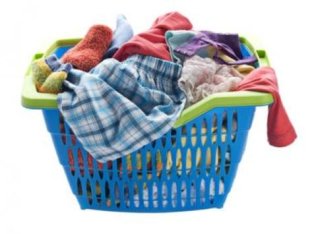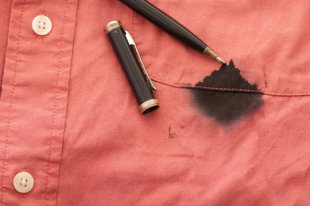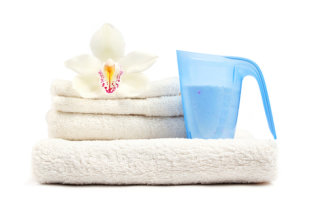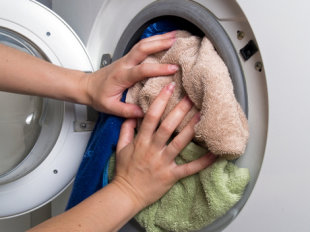The differences between whites and colors, hot and cold, varying fabrics can make laundry seem like a daunting task. It doesn't have to be so hard. With sixteen years experience, Chris Allsbrook, former textile analyst at the Textile Analysis Laboratory of the Dry Cleaning & Laundry Institute and now Director of Training for Maryland-based ZIPS dry cleaning chain, has all the tips for doing laundry the right way.
PRE-TREATING IS PRIORITYThe best way to treat stains when caring for your garments at home is to use a good pre-treating product and a soft toothbrush. There are a lot of different pre-treaters out there. Allsbrook recommends using a product that is customized for different types of stains. Put a pea-sized drop of product on the stained area and gently rub it into the fibers with a soft-bristled toothbrush. Let it set for 10-15 minutes, then wash the garment as normal (make sure to test the color safety before applying the product by putting a tiny drop on an unexposed area with a cotton swab and observing for any color transfer or loss). Hunt around for the product that is right for you.
Tip: If you get a stain on your pants and don't plan to wash clothes for a few days, tie the pants in a knot as a reminder that it needs special attention. You can also put a clothespin at the area to mark the spot that needs to be treated.
KEEPING WHITES - WHITE White fabrics should be washed separately from colored fabrics to retain their bright, white appearance. Wash white garments in warm to hot water, making sure to use the proper amount of detergent for the load size. Minimize the use of chlorine bleach because it has the potential to break down the optical brighteners/fluorescent whitening agents in white fabrics and give it a yellow tint.
SHRINKAGE Most shrinkage develops in the final stages of the drying process. To minimize shrinkage, wash garments on a gentle cycle and tumble dry at low or medium temperatures until just damp, then hang them to dry. This process might make the fabric feel slightly stiff (especially with natural fabrics, such as cotton) but the stiffness can be removed by hand ironing or by tumble drying on air only. Make sure to use the cool down cycle on your dryer to avoid wrinkling.
MOST COMMON OOPS Overloading the washing machine - Doing laundry is a chore and many consumers rush through it by putting as many items in the washer as they can. But if you put too many garments/items in the washing machine, you will not get enough flushing and rinsing action for good soil removal and overall cleaning.
Using too much detergent - Using extra detergent will not get your clothes cleaner. The unrinsed detergent residues can coat the fibers and will affect how the fabric breathes. Clothes that breathe easily, like cotton, make you feel cooler and absorb perspiration. Fabrics that don't breathe make you feel hot, sticking and slimy.
Using too much fabric softener - We all love soft clothes, but when you use too much fabric softener it can create an oily film on the fabric. This film can make your clothes feel slimy when you wear them and will decrease water absorbency of towels.





No comments:
Post a Comment